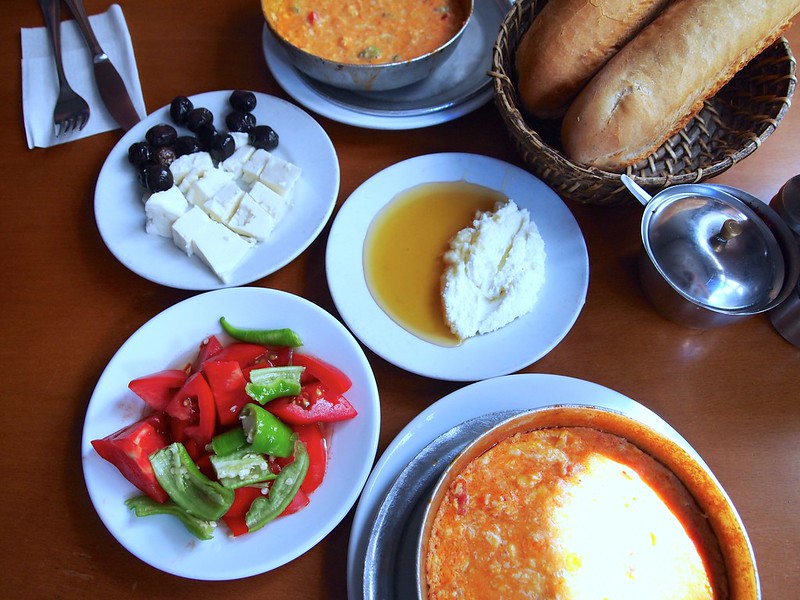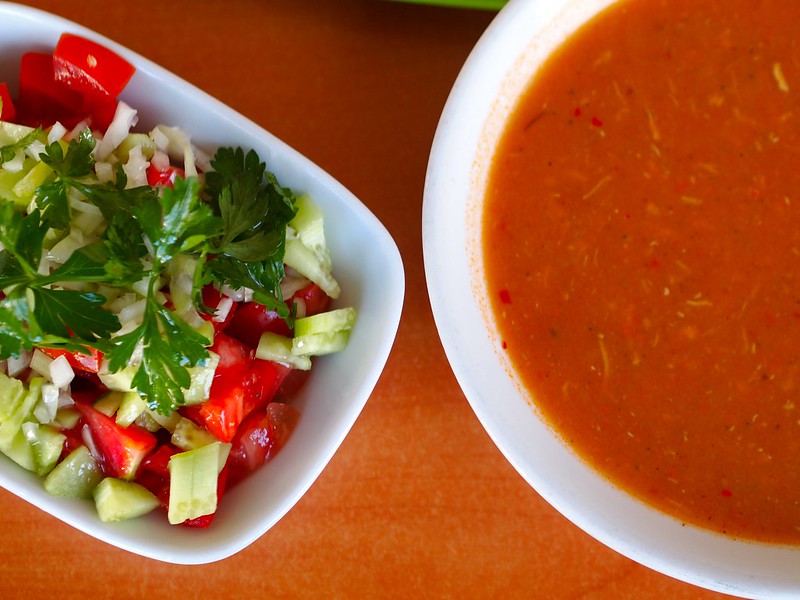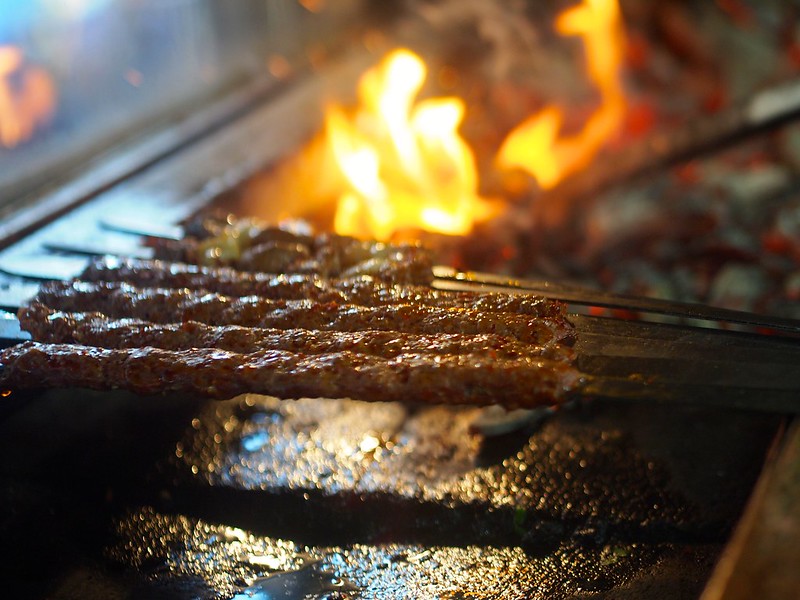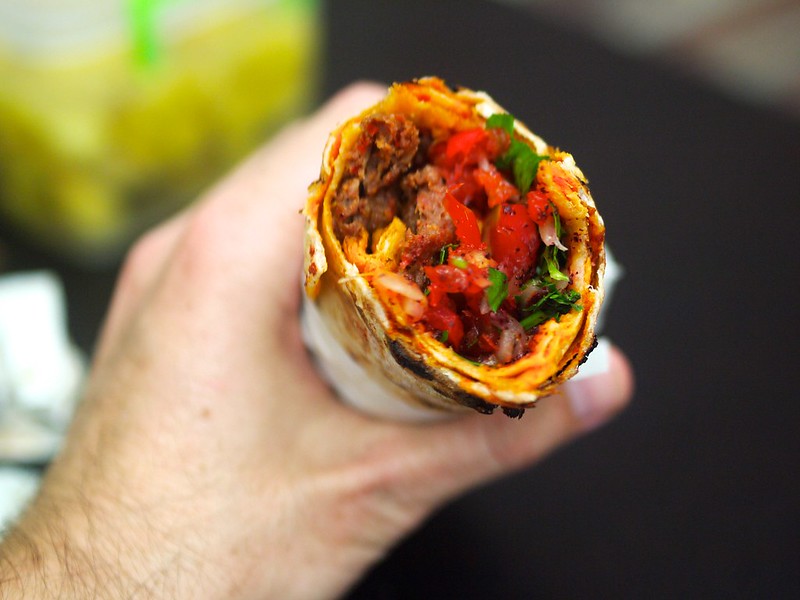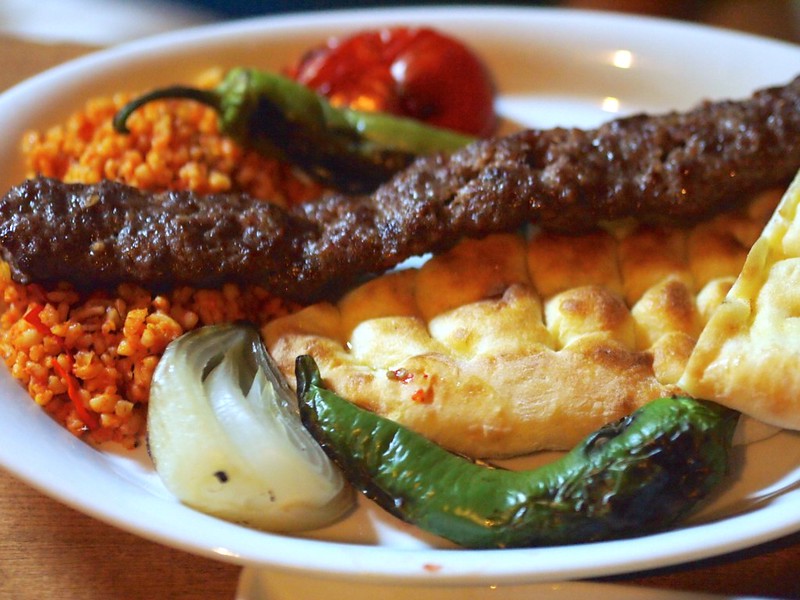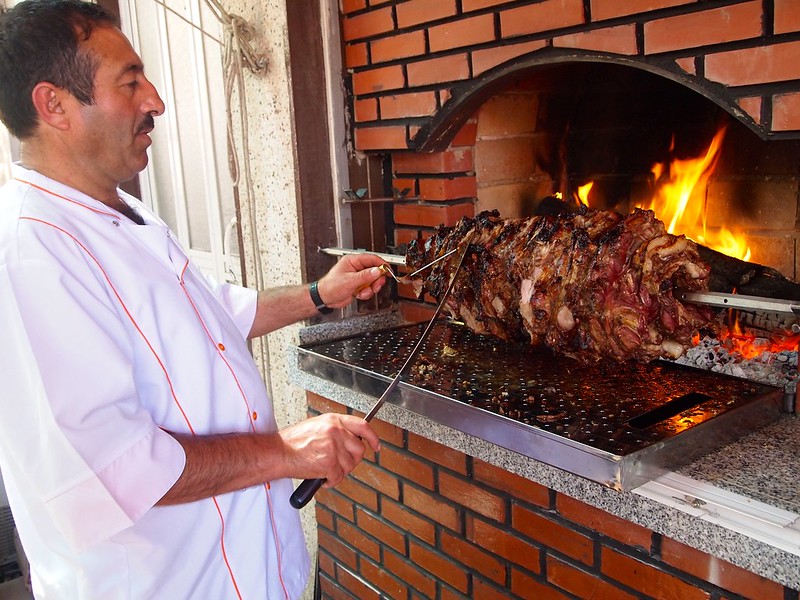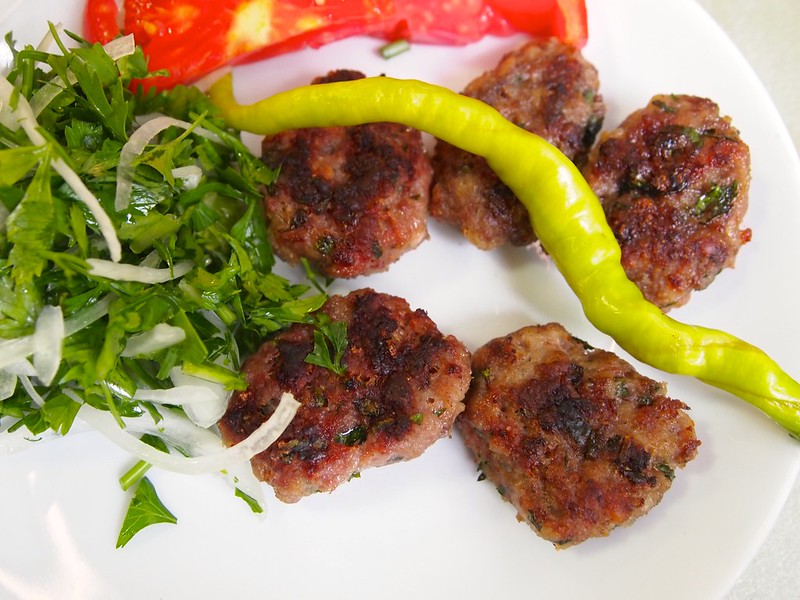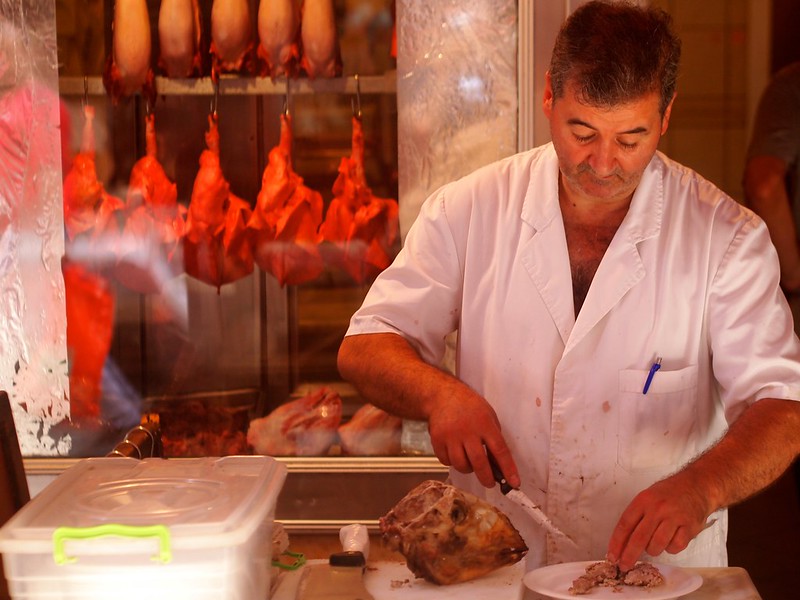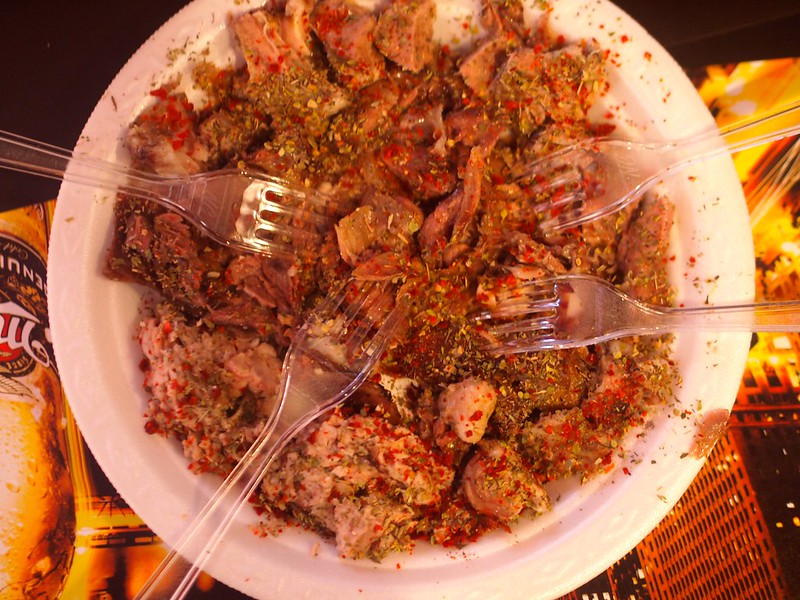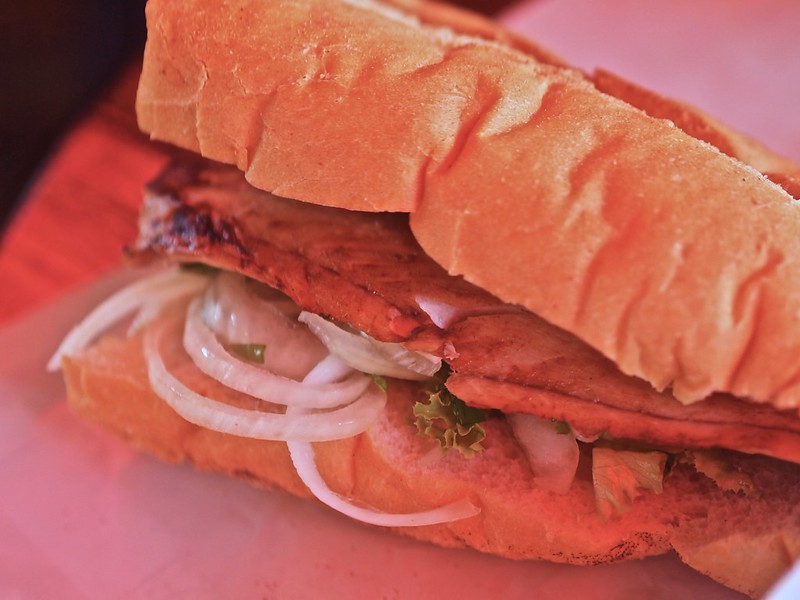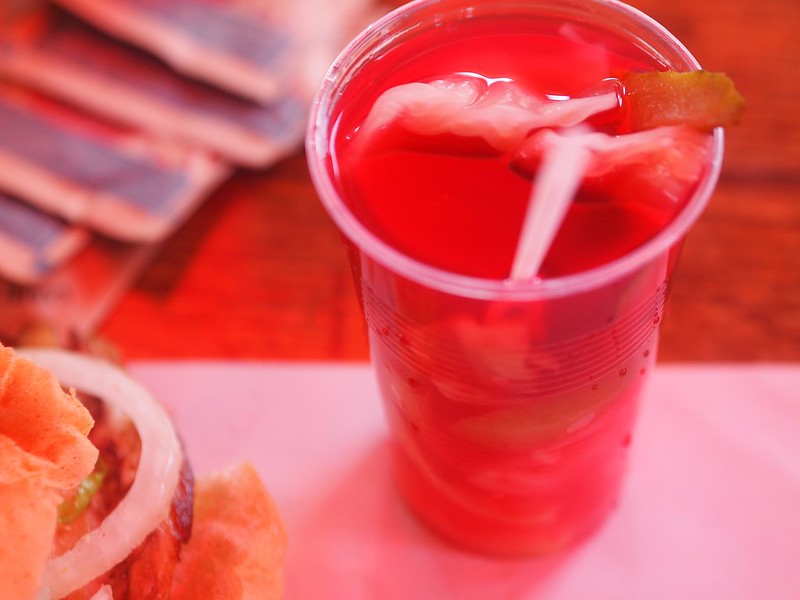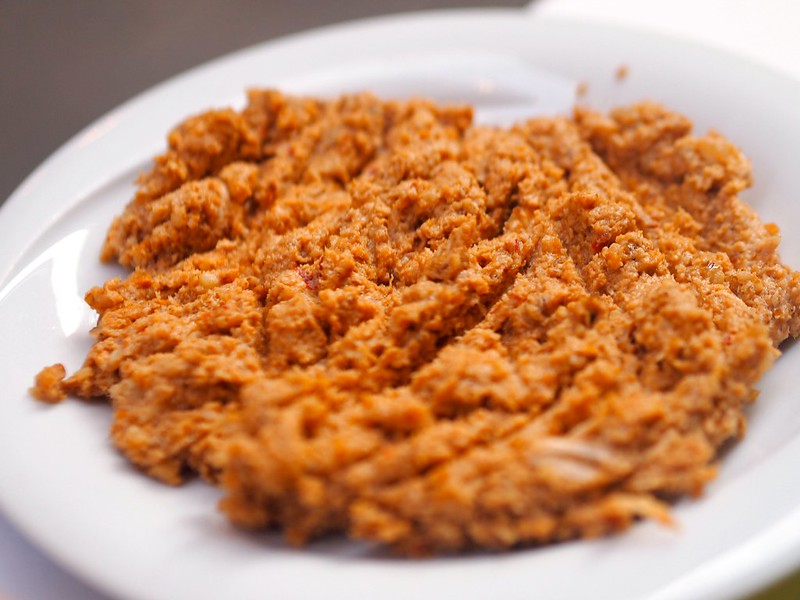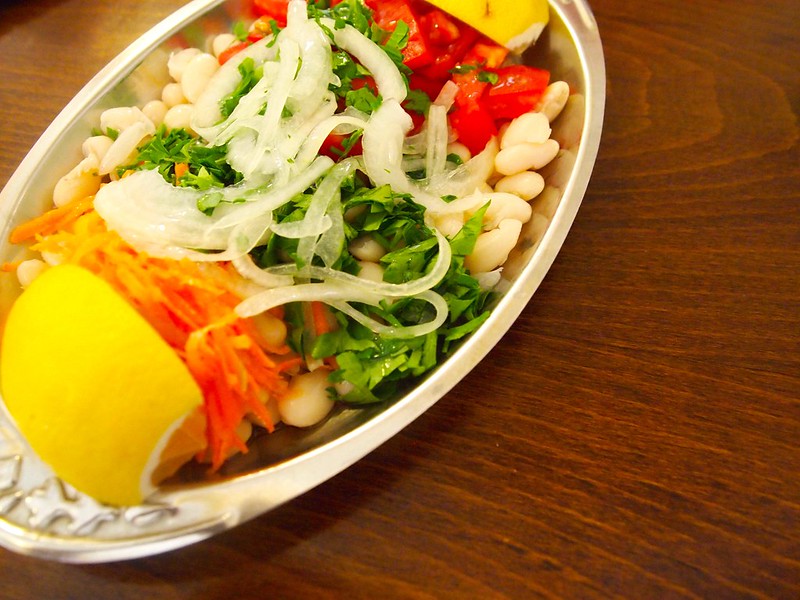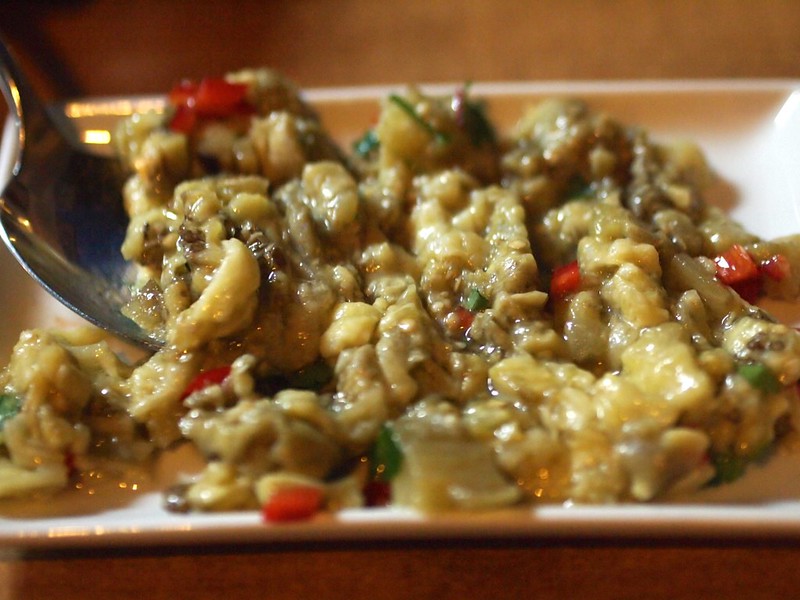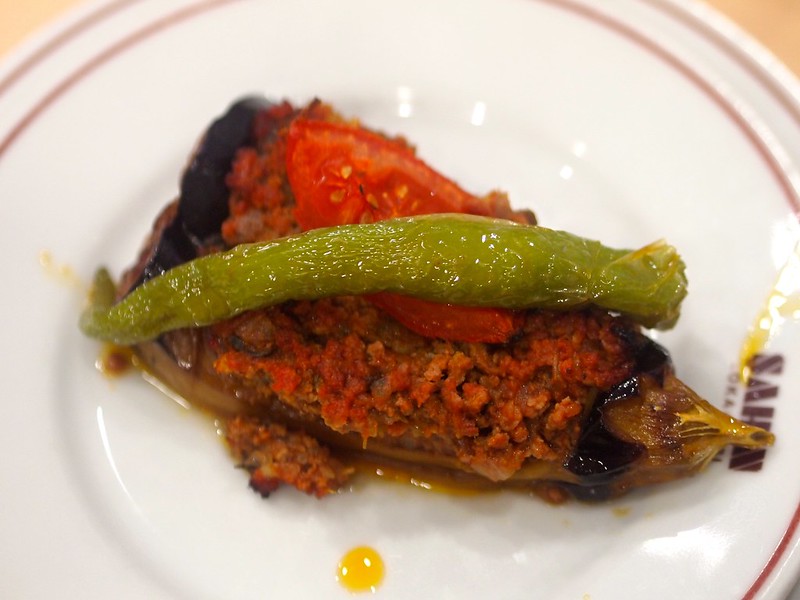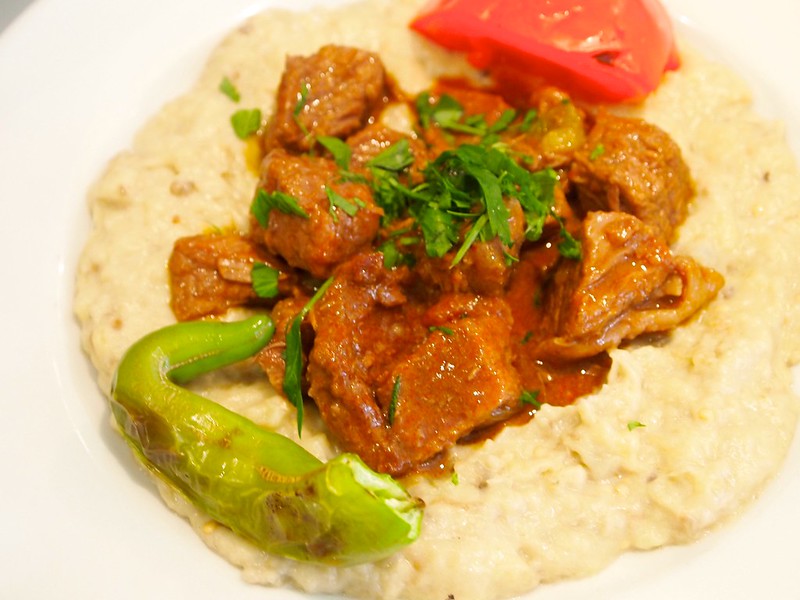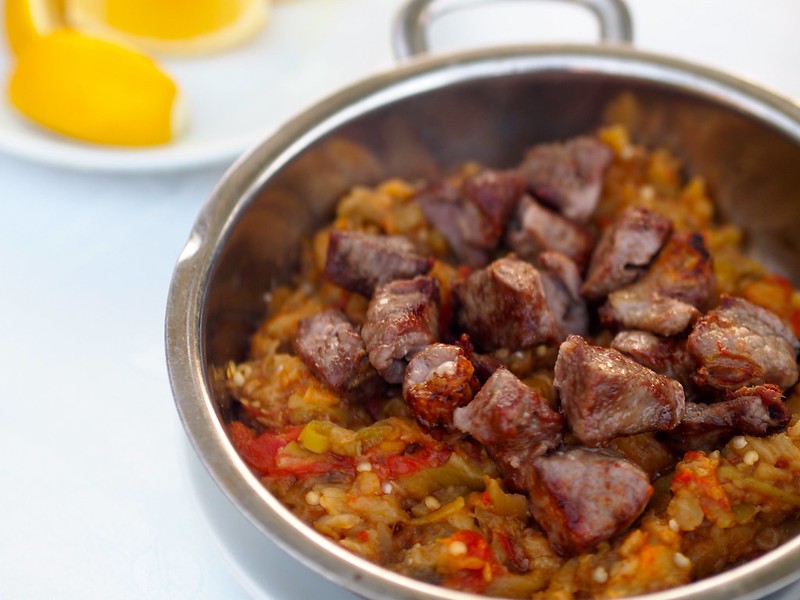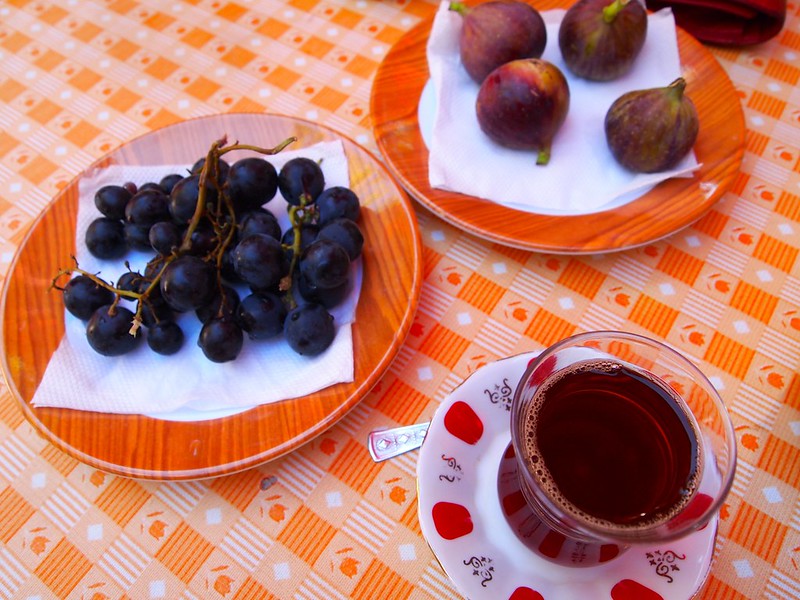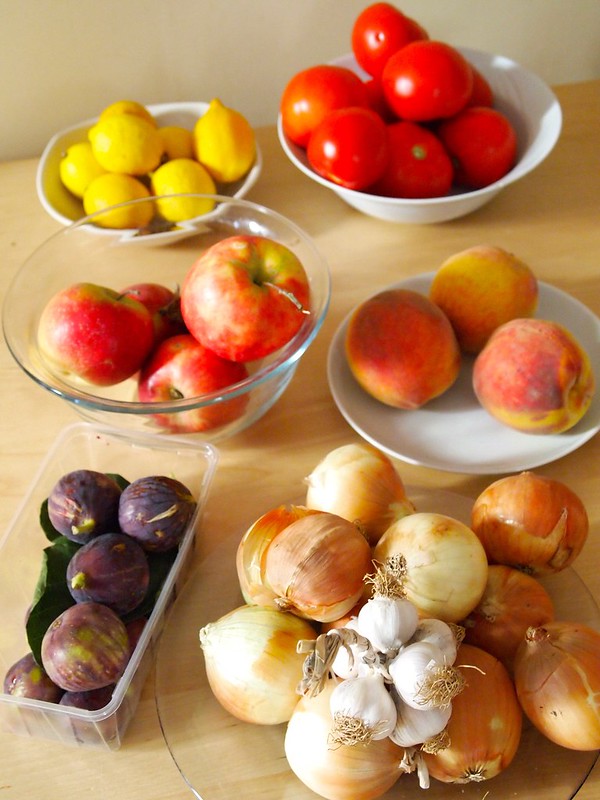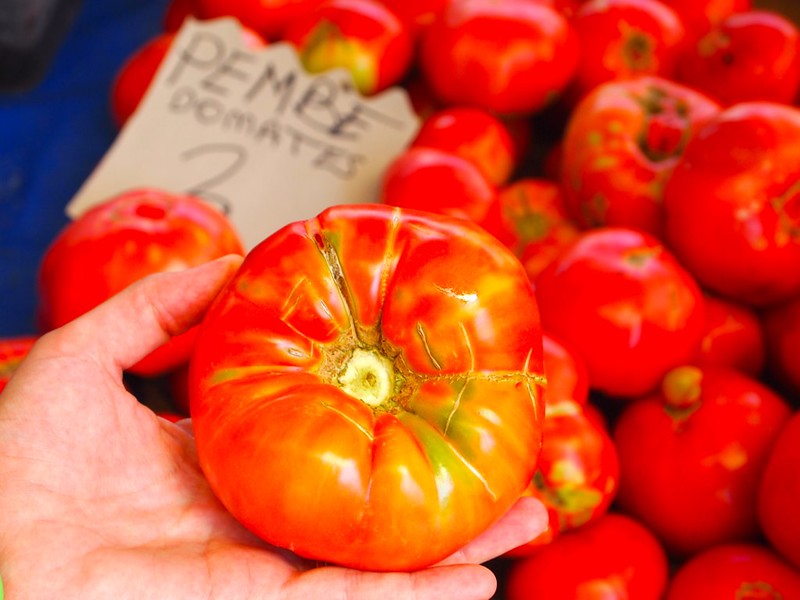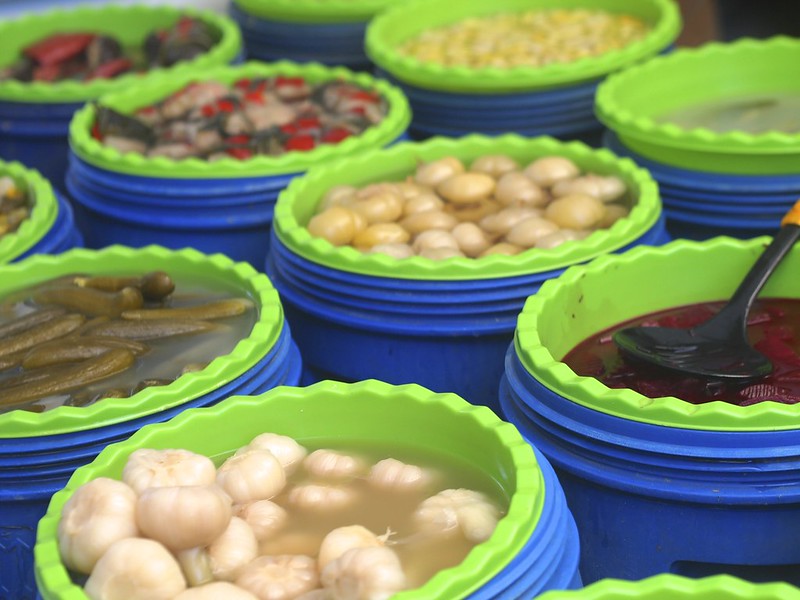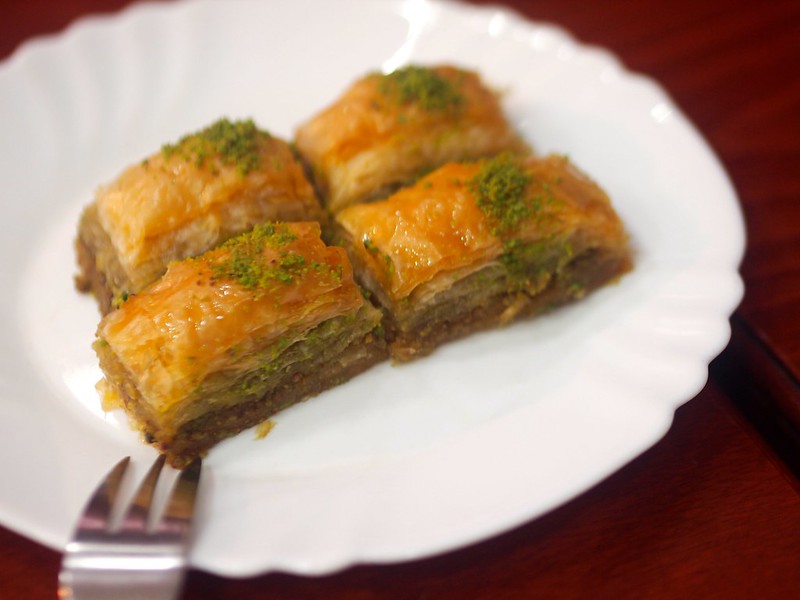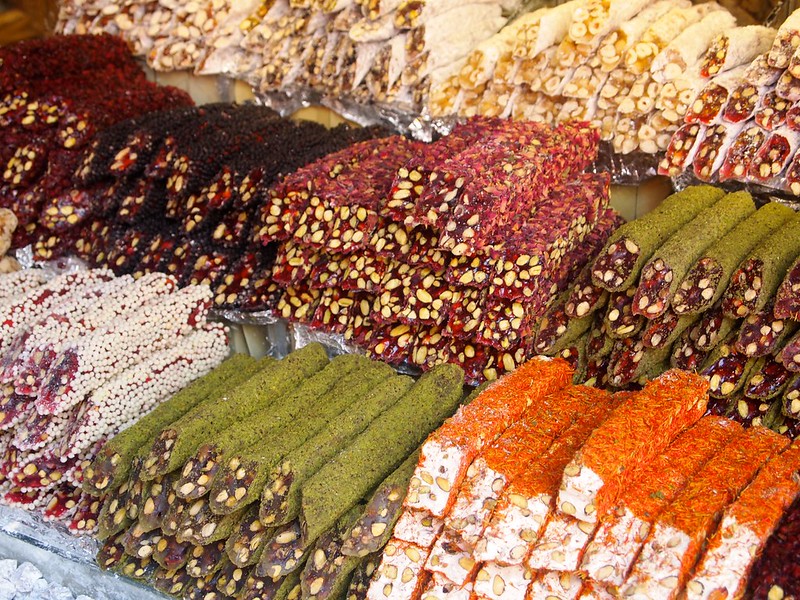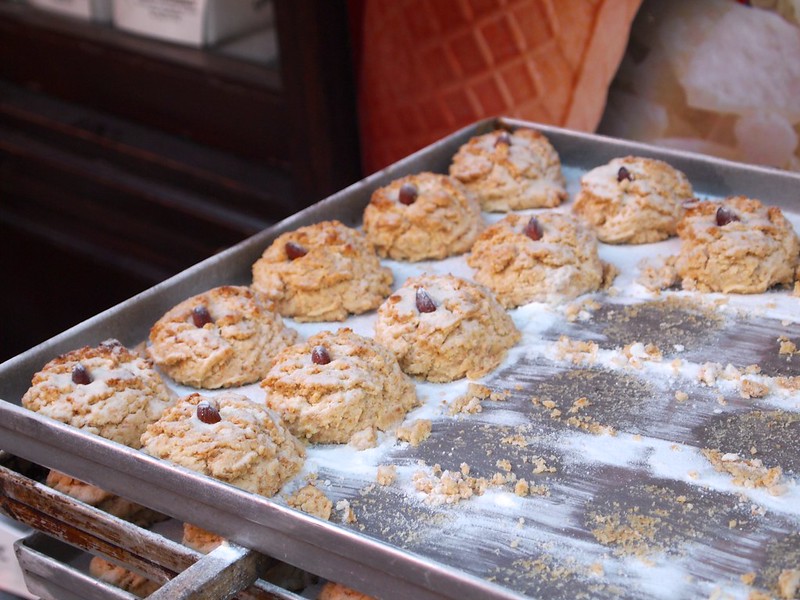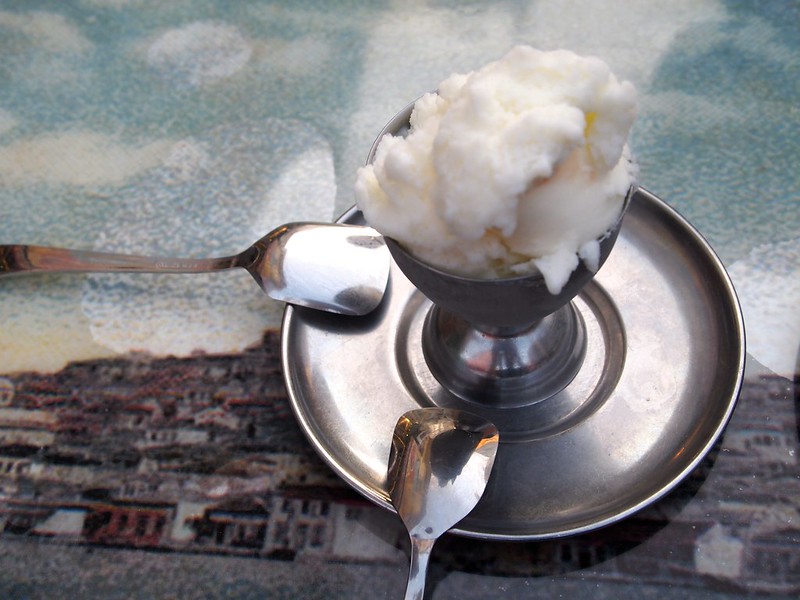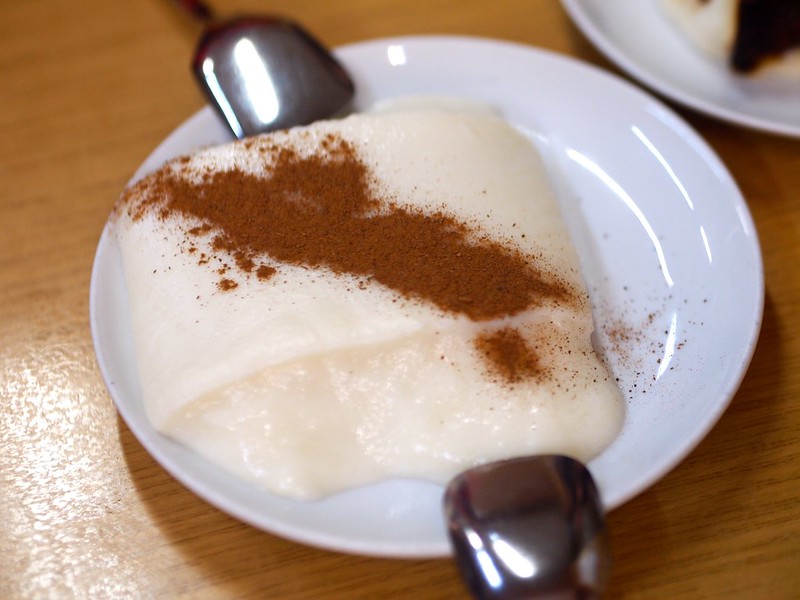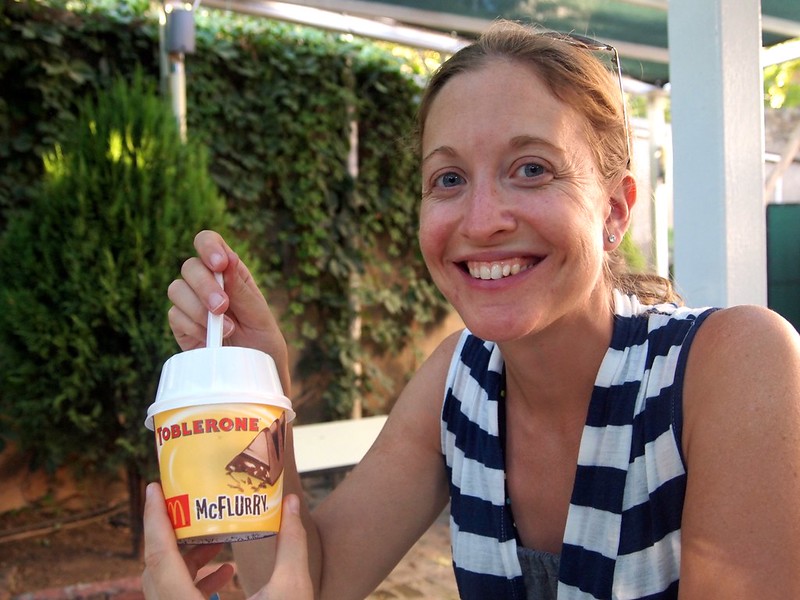Eating Turkey
Doner kebab — that mysterious tower of layered meat and fat on a rotating vertical spit — is all we knew about Turkish food before touching down in Istanbul. Lucky for us, the food is so good that we were in Turkey for 6 weeks before trying real doner for the first time.
We liked the food here so much because it reminded us of the food we love to cook at home: grilled meats, simple preparations of seasonal produce, and delicious fresh salads. Good, honest, home cooking.
Turkish Breakfast
Every morning we stuffed ourselves on a huge Turkish breakfast, a spread of: eggs, olives, tomatoes, cucumbers, a few types of cheese (but always beyaz peynir, Turkey’s version of feta), fresh fruit, bread, homemade preserves, and more. Best of all, this was usually complimentary at our guesthouses. At the Rose Pension in Patara, our friendly host Mesut proudly boasted that everything on our breakfast plate except the bread and cheese was from his family’s garden.
When we went out for breakfast, we really liked menemen — barely cooked scrambled eggs with tomatoes and peppers.

And maybe the best thing we ate in Turkey was the simplest — kaymak and honey, a high-fat clotted cream made from water buffalo milk served alongside super-fresh, straight out of the comb honey. Turkey is literally the land of milk and honey.
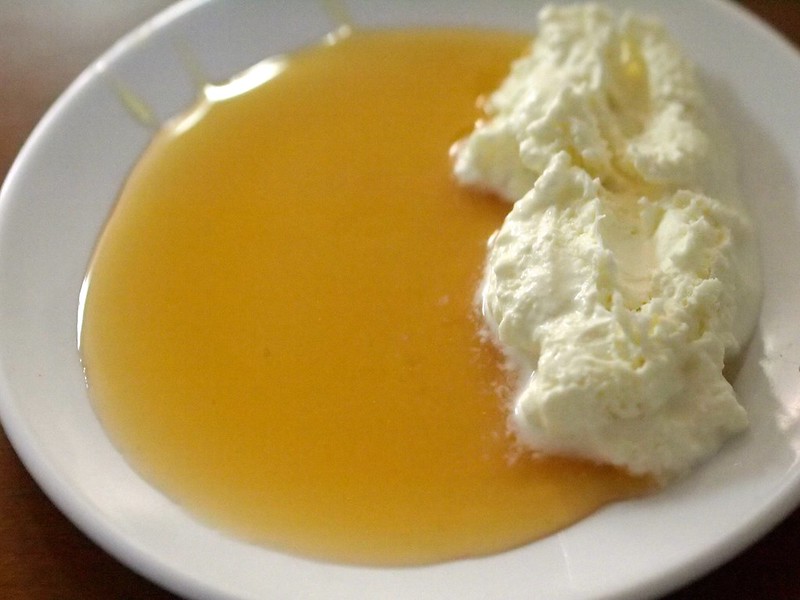
Salads and such
We had the best salads in Turkey. We accompanied most meals with coban salatasi — “Shepard’s Salad” — a simple salad of cucumber, tomato, green peppers, onion and parsley dressed in lemon juice, really good olive oil, and if we’re lucky, pomegranate molasses. You can really judge a restaurant by how well they do simple things like this dish.
Meat on a stick
Of course, we ate lots of grilled meat in Turkey. Our absolute favorite is the adana kebab from Durumzade, a hole-in-the-wall kebab shop in Istanbul. They cook the spicy mixture of ground lamb on long wide skewers directly over charcoal until it’s perfectly charred on the outside and tender and juicy on the inside.
The grill master wraps the pita around the kebabs to soak up the meat juice prior to assembling the wrap with sumac-dusted onions, greens, and tomatoes. The traditional accompaniment to this is ayran, a salty yogurt drink that helps tame the heat. We had at least a half-dozen of these kebabs each (though not in one sitting!).
You can also order kebab plates, usually just a deconstructed kebab wrap, perhaps with a side of bulgar.
At this kebab shop in Tire, they served what they told us was Odemis kebab. It looked similar to doner kebab except on a sideways spit. I took this photo at 10:30 in the morning, coming off one of those huge breakfasts mentioned earlier, but we couldn’t resist a stop to try this.
Meatball shops make a great stop for a quick and cheap lunch. The best meatballs, like those from Kofteci Huseyin in Istanbul, taste supremely meaty. Bad versions are too stuffed with fillers and have almost a mushy texture.
Many butcher shops in Istanbul had a rack of roasted lamb heads in a display out front, almost like they’re smiling at you in a slightly terrifying way. Our friends from Istanbul, Virginia and Michael, agreed to share one with us. Once you plop down your 12 TL ($6), the butcher goes to work (“Time for the show!” he declared), pulling out the tender, juicy cheek, tongue, and jowl meat, and even the mushy brains (the texture of the brains was a little strange).
Then he seasons it up for you with all sorts of herbs and spices, and kindly delivers it to the bar next door. Nothing like sheep brains and an Efes brew for a manly afternoon snack!
Little fishies
Turkey has coasts on the Black Sea, Aegean, and Mediterranean, so seafood is a big part of the diet here. One thing we saw everywhere was hamsi — delicious little anchovies from the Black Sea. Fried whole, we loved munching on these by the water near the Karakoy fish market in Istanbul for a healthy, filling lunch.
Cheap balik ekmek — fish sandwiches — were found all over Istanbul, especially near the Galata bridge. Here, the cooks grilled dozens of fish fillets at a time inside seriously rocking boats docked next to the bridge. A sandwich was usually 6 TL ($3). Personally, the fish to bread ratio was too low for my taste. For an interesting accompaniment you can wash it down with hot pink pickle juice from one of the vendors nearby!
Mezzes
Dinner in Turkey starts with mezzes, small plates designed for sharing, often accompanied by raki, the national anise-flavored spirit. One of our favorites was this Circassian chicken spread — a mixture of chicken, red peppers, and walnuts from Ficcin restaurant in Istanbul.
This white bean salad is another popular one, especially as an accompaniment to meatballs.
And so is eggplant a million different ways…
Eggplant-a-palooza
We had it roasted and mashed into a spread…
… stuffed with tomatoes, onion and garlic in a dish called Imam bayildi or “the sultan swooned”…
… pureed with cream and cheese underneath stewed lamb in a dish called hunkar begendi, “The Sultan’s Delight,” at Karakoy Lokantasi (far and away our favorite!)…
…pureed with roasted peppers underneath lamb shish kebab…
… stewed with tomatoes, roasted and covered in garlicky yogurt, roasted and chilled into a salad…. If you’re planning a trip to Turkey, I hope you like eggplant.
Pide and Lamacun
Pide (pronounced “pee-day”) is basically the Turkish version of pizza. The crust is oblong shaped — sort of like a big canoe — covered in your choice of toppings, and cooked in a wood-fired brick oven. Our favorite version was at Simsek Pide near Taksim Square in Istanbul, where the crust gets a healthy coat of melted butter before they bring it out to you.
Lamacun (pronounced lam-a-joon) is much simpler. The dough is so thin it comes out of the oven almost cracker-like, topped with a thin mixture of tomatoes, peppers, onions, and (sometimes) ground meat. Out of the oven, you can top it yourself with fresh greens and lemon juice, and then roll it up like a burrito for a cheap on-the-go snack.

Fresh Fruit
We were lucky to be in Turkey in the heart of summer — we ate our weight in tomatoes, peaches, figs, and more. We couldn’t believe how many wild fig trees, berry bushes and grapevines we found. On our walk from our guesthouse to the ruins at Ephesus, we picked more figs than we could eat! There’s really nothing like a ripe, freshly picked fig.
PICKLES
Those who know me know I love pickles. The Turks pickle EVERYTHING and there’s a pickle, olive and preserves shop in every market. I suppose this makes sense — you have to do something with such a bounty of domestic produce. I was in heaven.
Sweets: Baklava, Lokum, and more
We loved the fistikli (pistachio) baklava from Karakoy Gulluoglu (I still can’t pronounce that). It tasted nutty, sweetened with just enough honey not to be overwhelmed by it, and with a distinctive crunch from layers of pastry on top. The chocolate baklava, albeit untraditional, was fantastic too.
When I read The Lion, the Witch and the Wardrobe I never understood why Edmund was duped by the Witch with something as gross as Turkish delight. Then I tried the Turkish delight (lokum in Turkish) in Istanbul. The best versions are made with loads of dates and nuts, flavored with rosewater, and sweetened with honey. Think Lara Bars — they taste like something almost good for you. Most shops offer free samples!
We also loved these olive oil cookies from a bakery in Ayvalik. They had a crumbly texture and went great with a cup of tea.
Ice cream in Turkey is called dondurma. It’s made with mastic gum, making it stretchy, oddly chewy, and less prone to melting. It’s not our favorite, but watching the guys on Istiklal Caddessi in Istanbul put on a show by throwing the stuff around and holding it upside down over tourists’ heads is good fun.
Here’s a funky dessert — chicken breast pudding. Yep, thickened with shreads of chicken meat. Strange.
And finally, to prove we aren’t snobs…..we’re not sure if this has made it to the U.S. or not, but Toblerone McFlurries are pretty awesome.
Turkey – but especially Istanbul – is one of those wonderful places where there are literally so many good places to eat, you can (and should) orient your day around them. To help with that, we used a great iPhone/iPad app from the folks at the Istanbul Eats blog. EatingAsia has great coverage of Turkey as well. Or you can literally follow your nose to the next kebab shop, you probably won’t go wrong.

